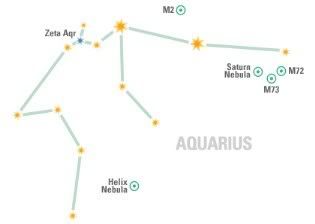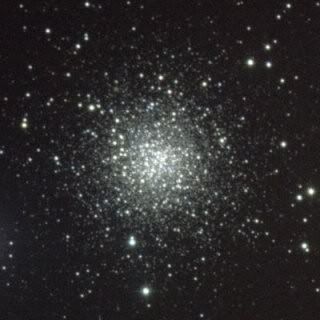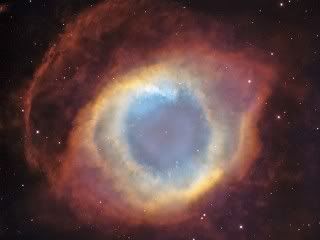Post by glactus on Feb 17, 2008 11:01:04 GMT

Aquarius, the water carrier, is one of the constellations of the Zodiac, and one of the oldest, the sun passing through it from mid February to mid March.
There are three deep sky images that are on the Messier catalog, the globular clusters Messier 2, Messier 72 and Messier 73.

Messier M72

Messier M2
Two well known planetary nebulae are located in Aquarius: The Saturn Nebula (NGC 7009), to the south east of N Aquarii; and the famous Helex Nebula (NGC 7293) south west of S Aquarii.

The famous Helix Nebula
The Helix Nebula, (magnitude 7.3) is one of the closest of all plantetary Nebulae, lying at a distance of 400 light years from Earth.
To find the Nebulae, start from the star Fomalhaut and move your telescope 11 degrees north west to 5th magnitude 47 Aqarii. From this star slide 2 degrees east to Epsilon Aquarii, and you're almost there. The Helix Nebular is just one degree west of this star.
Also found in Aquarius, and of considerable interest to SETI is Gliese 876 b a water cloud Jovian planet who's existence has been confirmed. The planets appearance is White water ice clouds. Gliese 876 b is positioned at the outer edge of a Habitability Zone at Mean Orbital Distance of 0.207 ± 0.00003 AU and the estimated radius of the planet is 1.026 Jupiter's 1. The planet Orbits around the star every 60.94 ± 0.013 Days
Why so much luck with Aquarius you may ask: When the sun entered Aquarius the new year was about to begin, spring was on the horizon and the watery season would assure abundant crops. One can therefore appreciate the importance of the water bearer.

Beyond Jupiter
credits:
images NASA
Text by Glactus


